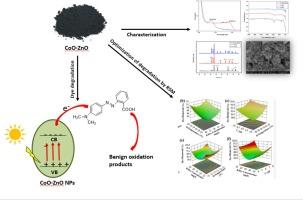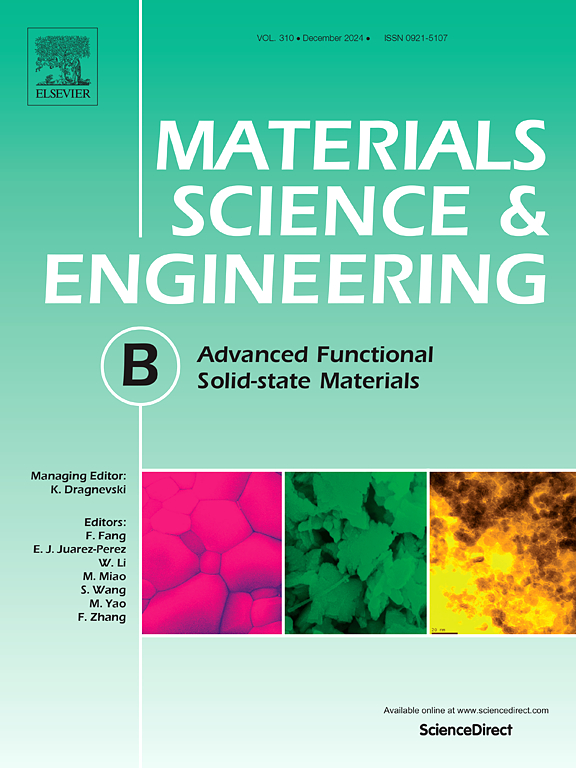声化学合成 CoO-ZnO 纳米复合材料并利用 RSM-BBD 优化有毒阴离子染料的降解过程
IF 3.9
3区 材料科学
Q2 MATERIALS SCIENCE, MULTIDISCIPLINARY
引用次数: 0
摘要
采用声化学共沉淀法合成了用于降解甲基红(MR)阴离子染料的 CoO-ZnO 纳米复合材料。使用紫外可见分光光度计、傅立叶变换红外光谱、XRD、SEM-EDX、TGA 和 Zeta 电位对纳米复合材料进行了表征。扫描电镜图像显示,由于样品的磁性不同,球形颗粒聚集在一起。Zeta 电位值显示胶体悬浮液遍布整个表面。利用响应面方法学(RSM)对 MR 染料的降解进行了优化,在 120 分钟内使用 30 毫克剂量的催化剂,降解效率达到 89%。降解机理依赖于合成的 CoO-ZnO 纳米复合材料的光催化活性,它能产生活性氧来分解 MR 染料。通过 RSM 优化实现的高降解效率凸显了该纳米复合材料在环境修复方面的潜力。这使其成为去除受污染水体中 MR 染料和其他阴离子染料的理想解决方案。本文章由计算机程序翻译,如有差异,请以英文原文为准。

Sonochemical synthesis of CoO-ZnO nanocomposite and optimizing the degradation of toxic anionic dye using RSM-BBD
A sonochemical co-precipitation method was employed to synthesize the CoO-ZnO nanocomposite for the degradation of methyl red (MR) anionic dye. The nanocomposite was characterized using UV–Vis spectrophotometer, FTIR, XRD, SEM-EDX, TGA and Zeta potential. The SEM images showed the agglomeration of spherical grains due to the difference in the magnetic nature of the sample. The zeta potential values exhibited that the colloidal suspension was present all over the surface. Response Surface Methodology (RSM) was utilized to optimize the degradation of MR dye, and achieved 89 % removal efficiency with a 30 mg dose of the catalyst over 120 minutes. The degradation mechanism relies on the photocatalytic activity of the synthesized CoO-ZnO nanocomposite, which generates reactive oxygen species to break down MR dye. The high degradation efficiency, achieved via RSM optimization, underscores the nanocomposite’s potential for environmental remediation. This makes it a promising solution for removing MR dye and other anionic dyes from polluted water.
求助全文
通过发布文献求助,成功后即可免费获取论文全文。
去求助
来源期刊

Materials Science and Engineering: B
工程技术-材料科学:综合
CiteScore
5.60
自引率
2.80%
发文量
481
审稿时长
3.5 months
期刊介绍:
The journal provides an international medium for the publication of theoretical and experimental studies and reviews related to the electronic, electrochemical, ionic, magnetic, optical, and biosensing properties of solid state materials in bulk, thin film and particulate forms. Papers dealing with synthesis, processing, characterization, structure, physical properties and computational aspects of nano-crystalline, crystalline, amorphous and glassy forms of ceramics, semiconductors, layered insertion compounds, low-dimensional compounds and systems, fast-ion conductors, polymers and dielectrics are viewed as suitable for publication. Articles focused on nano-structured aspects of these advanced solid-state materials will also be considered suitable.
 求助内容:
求助内容: 应助结果提醒方式:
应助结果提醒方式:


